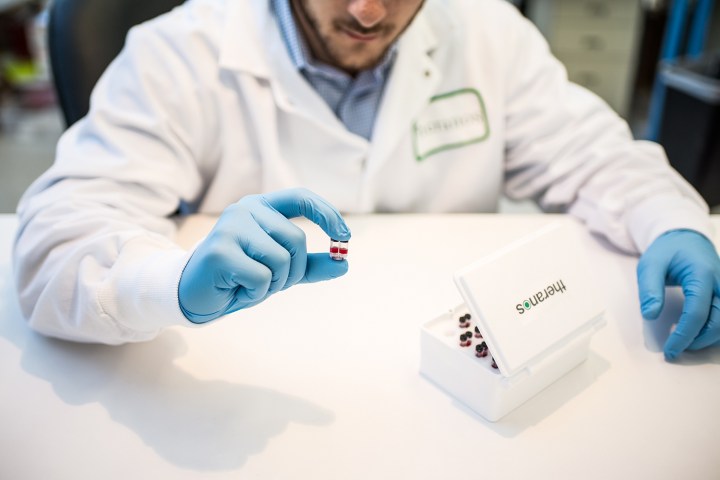
Despite the medical community call its blood-testing technology fraud, a federal investigation, and a criminal probe, Theranos is still pressing forward. And now, the company has announced a new blood-testing device at the annual meeting of the American Association for Clinical Chemistry in Philadelphia.
Speaking to a group of laboratory scientists, CEO Elizabeth Holmes unveiled a new device called the MiniLab that promises to run accurate tests on tiny samples (160 microliters) of blood. That’s the equivalent of a few drops from a finger prick. Sound familiar?
It’s the same concept as Theranos’ previous pitch, and Holmes did not address any of the issues regulators found in that ill-fated idea. She noted that the conference was an inappropriate setting in which to analyze the company’s very public problems.
“We’re pleased to share our technologies with the entire laboratory industry. It’s the beginning of the next phase of the company, as we introduce our technologies to the world,” Holmes said.
Of course, this next phase has yet to be approved by the Food and Drug Administration (FDA), which might be a slightly less-than-auspicious start. But true to form, Holmes seemed confident about the MiniLab’s abilities. According to the executive, this new machine has the capacity to detect the Zika virus, and perform a total of 11 blood tests (though not all these tests can be conducted using a single 160-microliter sample).
Unlike the last time Theranos came to market, the company is now relying heavily on peer reviews to validate their findings. As the Wall Street Journal reported, Theranos says it will submit all results and conclusions of their new device to other experts in the field for verification. But already, some experts are expressing skepticism.
“Every piece of technology they presented has been known for many years, and exists in other platforms largely in the same configuration, or in some cases in much more compact form in competitor’s platforms,” said Geoffrey Baird, an associate professor in the department of laboratory medicine at the University of Washington.
So is this the story of a phoenix rising from the ashes, or just more ashes? Only time will tell, Theranos.


